Apache Indians
The Apache of the Southwest are hailed as "the most aggressive warriors to have fought in the American Indian Wars"—famous for their fierce warrior skills and strategic battle plans.
From peacekeepers to warriors, find out how this hunter-gatherer tribe became known as the most aggressive group in North America, and why we should never forget their name.

Their Story
Traditionally, the Apache were a nomadic tribe whose lives revolved around the buffalo. And while they lived harmoniously with nature for centuries, the invasion of Spanish and American settlers quickly changed their tune. Suddenly, they had to protect not only their land, but every aspect of their heritage.
This is their story, from their traditional lifestyle and their fight for their land, to how they live today.
Who are they?
The people known as the Apache include several related Indigenous North American tribes. These tribes are culturally divided into the Eastern Apache and the Western Apache—each made up of several smaller bands.
 Allen & Ginter, Wikimedia Commons
Allen & Ginter, Wikimedia Commons
What is the meaning of their name?
A neighboring tribe, the Zuni, gave them the name Apachu, which means, “enemy.”
However, the Apachu refer to themselves as Nde, which means “the people.” Other self-given names include Inde, Tinde, or Tinneh.
 Museum of Photographic Arts, Picryl
Museum of Photographic Arts, Picryl
What language do they speak?
The Apache are Athabascan-speaking people who are linguistically related to the Navajo tribe. The Western-Apache language is a more specific dialect and is currently considered endangered.
 Detroit Publishing Company, Wikimedia Commons
Detroit Publishing Company, Wikimedia Commons
How big is their tribe?
Over the years the Apache population has gone up and down, based on battle and forced colonization. In 1700 their population was about 60,000, and by the end of the Apache wars they were down to less than 6,000.
However, in 2020 their population rebounded and it is now estimated at just under 150,000.
 Grand Canyon National Park, Flickr
Grand Canyon National Park, Flickr
Where did they live?
Before Spanish colonization, Apache domain extended over what are now (in the United States) east-central and southeastern Arizona, southeastern Colorado, southwestern and eastern New Mexico, and western Texas and (in Mexico) northern Chihuahua and Sonora states.
The ancestral Apache probably did not reach the Southwest until at least 1100 CE.
 StellarD, CC BY-SA 4.0, Wikimedia Commons
StellarD, CC BY-SA 4.0, Wikimedia Commons
Where do they live now?
Today, Apache tribes and reservations are headquartered in Arizona, New Mexico, Texas, and Oklahoma, while in Mexico the Apache are settled in Sonora, Chihuahua, Coahuila and areas of Tamaulipas.
 Christopher Nicol, CC BY-SA 3.0, Wikimedia Commons
Christopher Nicol, CC BY-SA 3.0, Wikimedia Commons
What were their ancestral homelands like?
Historically, the Apache homelands were located among high mountains, sheltered and watered valleys, deep canyons, deserts, and the southern Great Plains—including areas in what is now Eastern Arizona, Northern Mexico (Sonora and Chihuahua) and New Mexico, West Texas, and Southern Colorado.
These areas are collectively known as Apacheria.
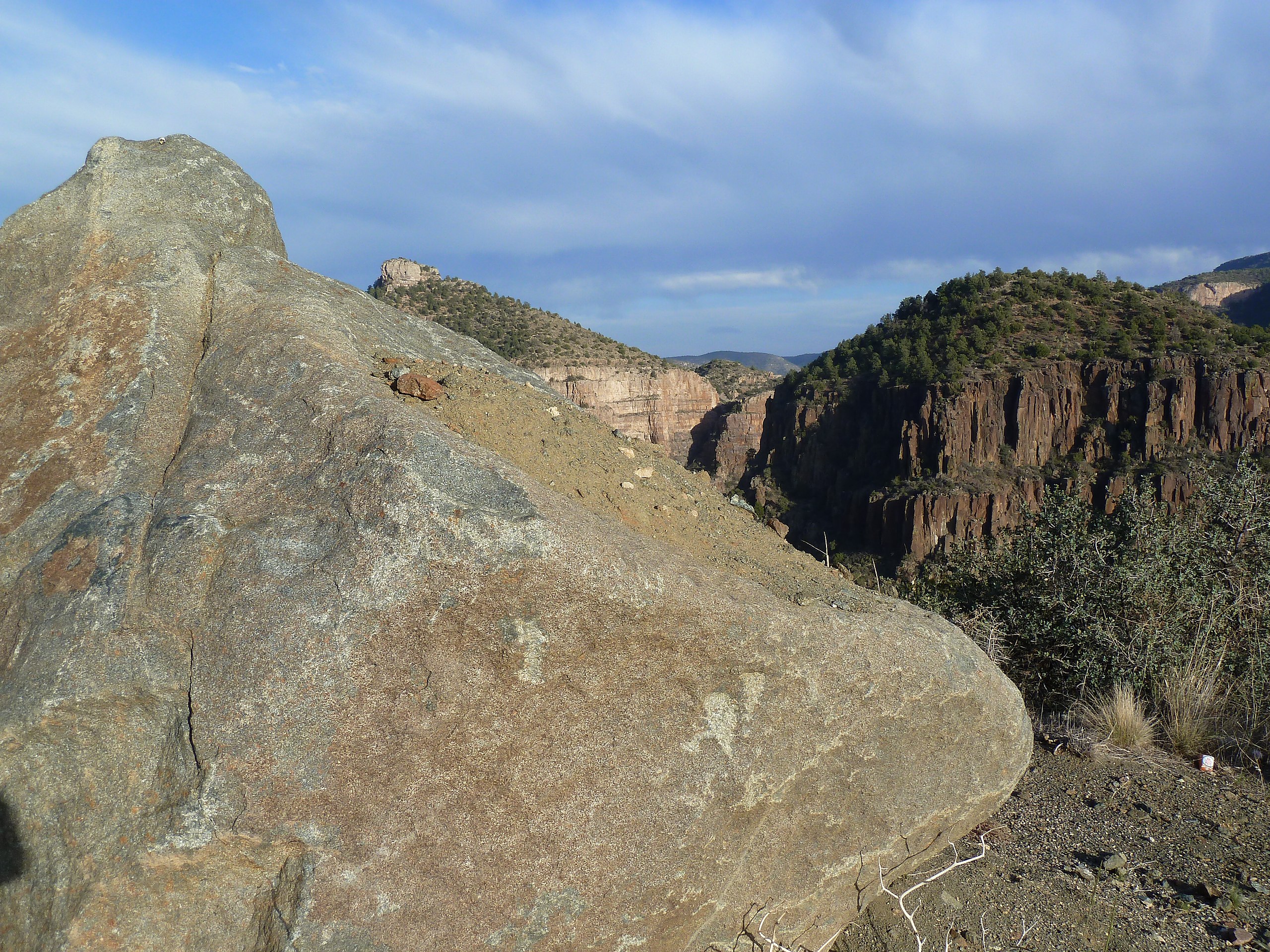 Chris English, CC BY-SA 3.0, Wikimedia Commons
Chris English, CC BY-SA 3.0, Wikimedia Commons
What was their traditional lifestyle?
The Apache were traditionally nomadic hunter-gatherers—they lived off the land and moved with the seasons. They usually spent their winters on warmer plains and their summers in the cooler mountains.
 National Gallery of Art, Picryl
National Gallery of Art, Picryl
What is their connection to the buffalo?
The Apache followed the buffalo herds as they relied on the animal to provide them with food, and materials for clothing and shelter.
Buffalo meat was eaten and their hides and fur were used for clothing. Bones and cartilage was used as building materials and to make tools.
![]() The Minneapolis Institute of Art, Rawpixel
The Minneapolis Institute of Art, Rawpixel
What did they live in?
The Apache lived in two types of traditional homes: the wikiup and the teepee.
The wikiup was more permanent structure and was shaped like a dome using tree saplings as a frame and grass as a cover.
The teepee was temporary. It was smaller and shaped like a cone, made from wood poles and buffalo hide.
 Edward S. Curtis, Wikimedia Commons
Edward S. Curtis, Wikimedia Commons
What did they wear?
Most of the Apache clothing was made from leather or buckskin. The women wore buckskin dresses while the men wore shirts and breechcloths.
Sometimes they would decorate their clothing with fringes, beads, feathers, and shells. They wore soft leather shoes called moccasins.
 Boston Public Library, Wikimedia Commons
Boston Public Library, Wikimedia Commons
What did they eat?
The Apache were hunter-gatherers, and they survived only off what nature provided. They hunted bison, deer, and other game and gathered many wild plant foods.
Though because the Apache is made up of so many different tribes, some did things differently.
Farming
Some Apache bands chose not to move around as often as others, and so they became more involved with farming. The farmers grew corn, squash, beans, sunflowers, and much more.
 Edward S. Curtis, Wikimedia Commons
Edward S. Curtis, Wikimedia Commons
What did they gather?
Aside from plants used in cooking and medicines, the Apache would gather various fruits and vegetables that naturally grow in valleys. Their main staple was corn. They also roasted agave, which took many days to roast in a fire pit before it was ready.
They also collected salt from salt lakes they were close to.
 Carl Werntz, Wikimedia Commons
Carl Werntz, Wikimedia Commons
How did they hunt?
The Apache used bows and arrows for hunting. Arrowheads were made from rocks that were chipped down to a sharp point. Bow stringers were made from the tendons of animals. Their main source of meat was from the buffalo.
They killed only what they needed for immediate use, and used as much as the animal as possible.
What other equipment did they use?
To carry their teepees and other items when they moved, the Apache used something called a travois. The travois was a sled that could be filled with items and then dragged by a dog.
 Karl Bodmer (1809-1893), Wikimedia Commons
Karl Bodmer (1809-1893), Wikimedia Commons
How did the travois evolve?
Later, when the Europeans brought horses to America, the Apache used horses to pull the travois. The horses were bigger, which meant their travois could be bigger, and thus, so could their teepees.
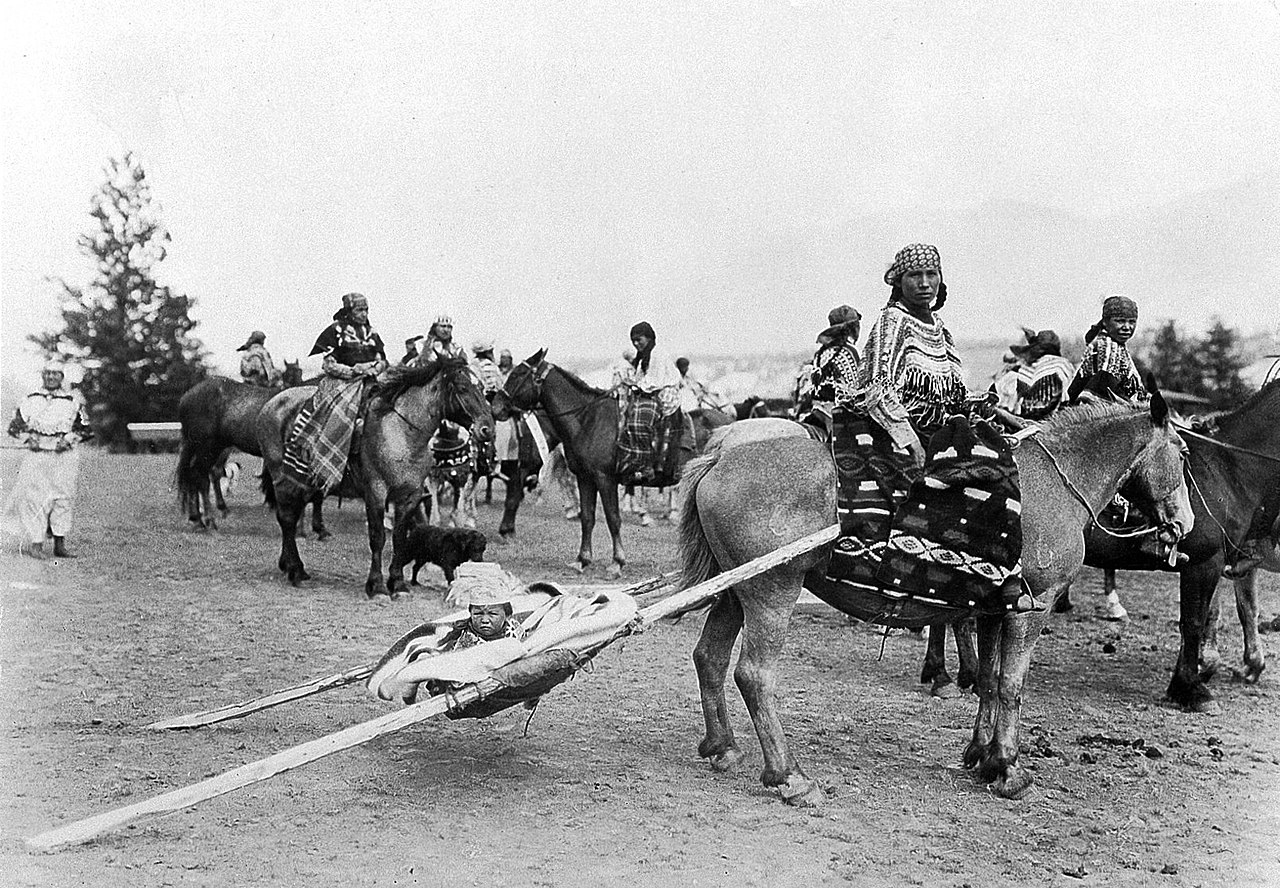 Unknown author, CC BY 4.0, Wikimedia Commons
Unknown author, CC BY 4.0, Wikimedia Commons
What other skills did they have?
The Apache women are very skilled in weaving. They would weave large baskets to store grain and other food. Basketmaking knowledge was passed down from mother to daughter.
They also made pots from clay to hold liquids and other items.
How is their family structured?
In the Apache community, groups of extended families live together. The extended family was based on the women, meaning that when a man married a woman, he would become part of her extended family and leave his own family.
What is their social structure like?
A number of extended families would live near each other in a local group which had a chief as the leader.
The chief would be a man who had earned the position by being the strongest and most capable leader.
What were the women’s roles within the community?
The women Apache were responsible for the home and cooking the food. They would also do crafts, make clothes, and weave baskets.
 C. C. Pierce, Wikimedia Commons
C. C. Pierce, Wikimedia Commons
What were the men’s roles in the community?
The men were responsible for hunting, building, making tools and were the tribal leaders.
 Unknown author, CC BY 4.0, Wikimedia Commons
Unknown author, CC BY 4.0, Wikimedia Commons
What was marriage like?
Most Apache marriages were monogamous; however, polygamy was permitted. Usually only wealthy or prestigious leaders had more than one wife.
 National Archives at College Park, Wikimedia Commons
National Archives at College Park, Wikimedia Commons
What happened upon the death of a spouse?
When a wife dies, the husband remains with his wife’s family and they would supply a new wife for him—which was usually a sister or cousin of the late wife.
When a husband passes, the wife had little to no obligation to his family, but they would provide a cousin or brother for her to marry.
 National Archives at College Park, Wikimedia Commons
National Archives at College Park, Wikimedia Commons
How were children treated?
Apache people were kind to their children. They taught them good manners, kindness, fortitude and obedience. The children would often play games that improved their dexterity.
 Detroit Publishing Company, Wikimedia Commons
Detroit Publishing Company, Wikimedia Commons
What are their beliefs?
The Apache honor four sacred mountains: Sierra Blanca, Three Sisters Mountains, Oscura Mountain Peak, and Guadalupe Mountains. Their homeland includes all of the land surrounding these mountains.
This land plays an important role in their spiritual life.
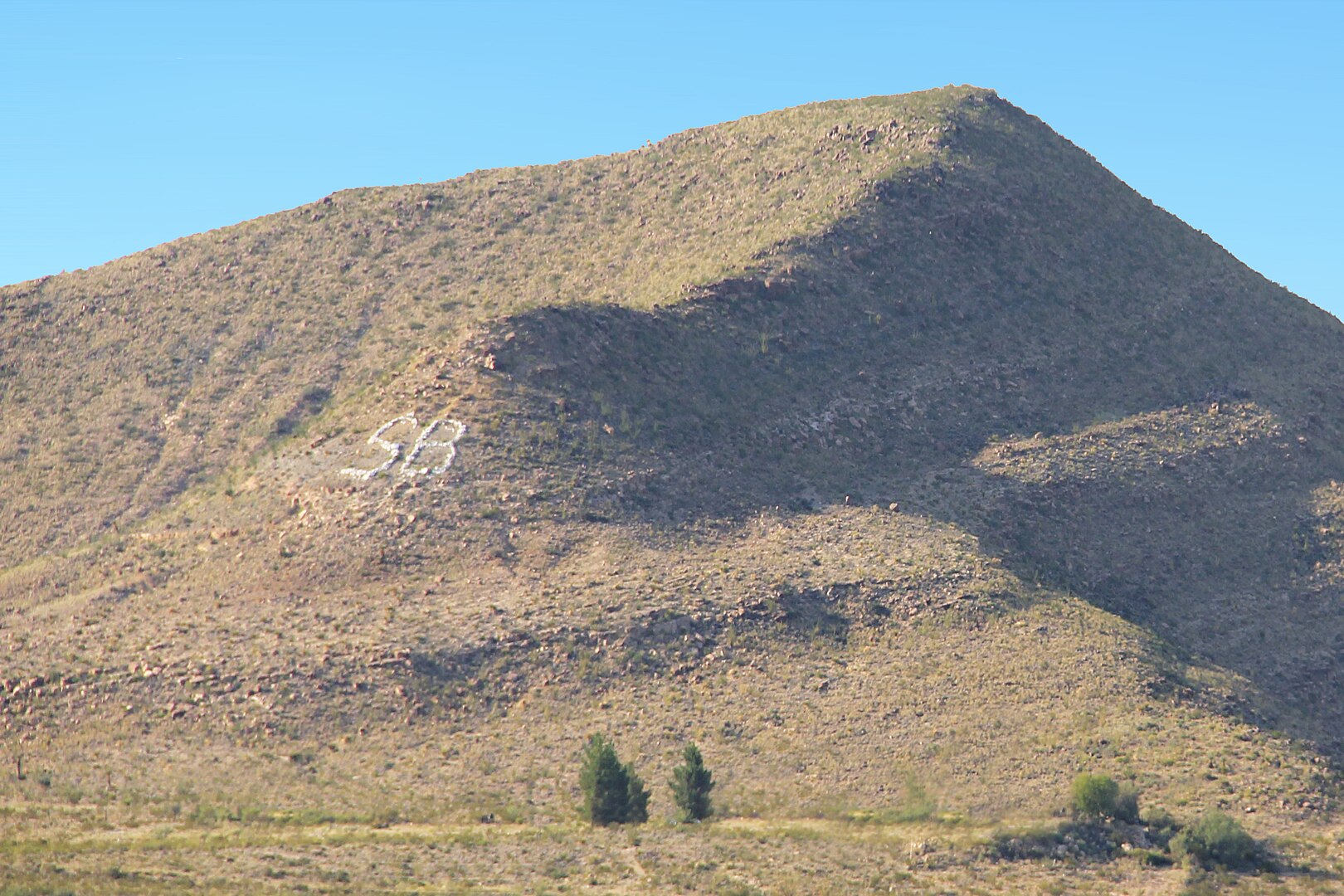 Ricraider, CC BY-SA 3.0, Wikimedia Commons
Ricraider, CC BY-SA 3.0, Wikimedia Commons
What are the four sacred mountains about?
These four mountains represent the direction of everyday life for the Apache people. It was there that the creator gave them life and it is a special place.
In fact, there is a legend that further highlights its significance.
 USGS/Cascades Volcano Observatory, Wikimedia Commons
USGS/Cascades Volcano Observatory, Wikimedia Commons
The White Painted Woman
According to the legend, a White Painted Woman gave birth to two sons, Child of Water and Killer of Enemies. They were born during a turbulent rainstorm when thunder and lightning came from the sky.
Giant Monsters feared them and wanted to kill them. When the sons grew older, they fought the monsters and won—saving all the humans and restoring peace.
 National Archives at College Park, Wikimedia Commons
National Archives at College Park, Wikimedia Commons
The Significance of the White Painted Woman
The White Painted Woman gave the Apache people their virtues of pleasant life and longevity. She is the model of heroic and virtuous womanhood.
 Unknown Author, Wikimedia Commons
Unknown Author, Wikimedia Commons
What are their religious beliefs?
Apache religion was based on the belief in supernatural things and the power of nature. Each group of Apache had its own interpretation of the supernatural and spiritual things.
 National Archives at College Park, Wikimedia Commons
National Archives at College Park, Wikimedia Commons
What were their traditional ceremonies?
The Apache had several traditional rituals and ceremonies, including fasting and rituals before hunting, puberty ceremonies, long-life ceremonies, sacred-bundle ceremonies, and more.
These rituals and ceremonies involved a Medicine man who performed them, and lots of dancing, storytelling, and singing.
 Grand Canyon National Park, Flickr
Grand Canyon National Park, Flickr
What is the puberty ceremony and why is it important?
The time of a young girl reaching puberty is sacred within Apache tribes. There are sacred and extensive ceremonies that celebrate this transition into womanhood.
The ceremonies last multiple days and can require months, and sometimes years, of preparation. The girl dresses like the White Painted Woman during this passage.
 National Archives at College Park, Wikimedia Commons
National Archives at College Park, Wikimedia Commons
What was taboo in their traditional culture?
Traditionally, eating certain animals was taboo. Although different bands had different taboos, common examples included bears, peccaries, turkeys, fish, snakes, insects, owls, and coyotes.
 Randall, A. Frank, Wikimedia Commons
Randall, A. Frank, Wikimedia Commons
How are taboos different between the bands?
Each band is governed independently.
A good example would be: the black bear was a part of the Lipan diet, but the Jicarilla never ate bear because it was considered an evil animal.
Both of those groups are bands of the Apache people.
 Edward S. Curtis, Wikimedia Commons
Edward S. Curtis, Wikimedia Commons
Snakes
Snakes or any product made of snake is prohibited on Apache lands. The Apache do not communicate with this animal; it is considered a bad omen to have contact with a snake.
Owls
The owl is a night creature and the Apache people do not have contact with this animal. Avoid having a night owl near you. It is considered a bad omen if an owl hoots near you day or night.
 Wing-Chi Poon, CC BY-SA 2.5, Wikimedia Commons
Wing-Chi Poon, CC BY-SA 2.5, Wikimedia Commons
How did they acquire supplies?
While most of what the Apache own is handmade using local resources, they also get a lot of their supplies from other villages either through trade, livestock hunts, or raiding.
 C. C. Pierce, Wikimedia Commons
C. C. Pierce, Wikimedia Commons
Raiding
Historically, the Apache had raided enemy tribes and sometimes each other, for livestock, food or captives. They raided with small parties, for a specific purpose.
In fact, the Apache are known to be fierce warriors and skillful strategists.
Who did they fight?
Spanish explorers were the first non-Indigenous people to enter Apache lands. Mexicans and Americans came later.
At first, the Apache were friendly with the settlers—until they started invading their lands and developing for gold, silver, and coal. Then, things got ugly.
![]() Minneapolis Institute of Art, Rawpixel
Minneapolis Institute of Art, Rawpixel
Defense
Known as “expert guerilla fighters,” the Apache resisted the Spanish and fought for their homelands. They led successful raids for years, defending their land and their culture.
Until something horrific happened.
The Chief
Mangas Coloradas and Cochise were Apache chiefs who led successful raids for many years.
Mangas Coloradas traveled to a military fort to negotiate peace, but instead he was met with hostility and killed. The troops then disfigured his body—which served as an incredible insult to the Apache, fueling the war.
 Library of Congress, Wikimedia Commons
Library of Congress, Wikimedia Commons
Conflicts
In general, the Apache battled with the Spanish for centuries, both raiding and trading with each other.
Their relationships depended greatly on the band—some bands fought with the Spanish while others traded with them.
Peace Treaties
Oddly enough, when a war occurred, the Spanish would send troops; after a battle both sides would "sign a treaty" and go home.
These traditional yet treacherous relationships continued after the independence of Mexico in 1821—but by 1835, the Apache were facing new conflicts.
 National Archives, Wikimedia Commons
National Archives, Wikimedia Commons
The Mexicans
By 1835 Mexico had placed a bounty on Apache scalps—meaning their severed heads were worth money.
Over the next few years, several Apache chiefs were killed for bounties—but their deaths were certainly avenged.
 Unknown Author, Wikimedia Commons
Unknown Author, Wikimedia Commons
The Retaliation
The Apache retaliated against Mexico by conducting a series of raids over the next two decades.
In 1856, Mexican authorities recorded that in the state of Durango, the Apache had taken nearly 6,000 lives, abducted 748 people, and forced abandonments of 358 settlements over the past 20 years.
 National Archives at College Park, Wikimedia Commons
National Archives at College Park, Wikimedia Commons
The United States
When the U.S. went to war with Mexico in 1846, several Apache bands promised U.S. soldiers they could safely cross their lands. And when the U.S. took over the Mexican lands, the Apache signed a treaty, respecting them as conquerors of the Mexicans’ land.
This peace treaty held on until gold miners rushed the Apache’s land—which didn’t sit well with them.
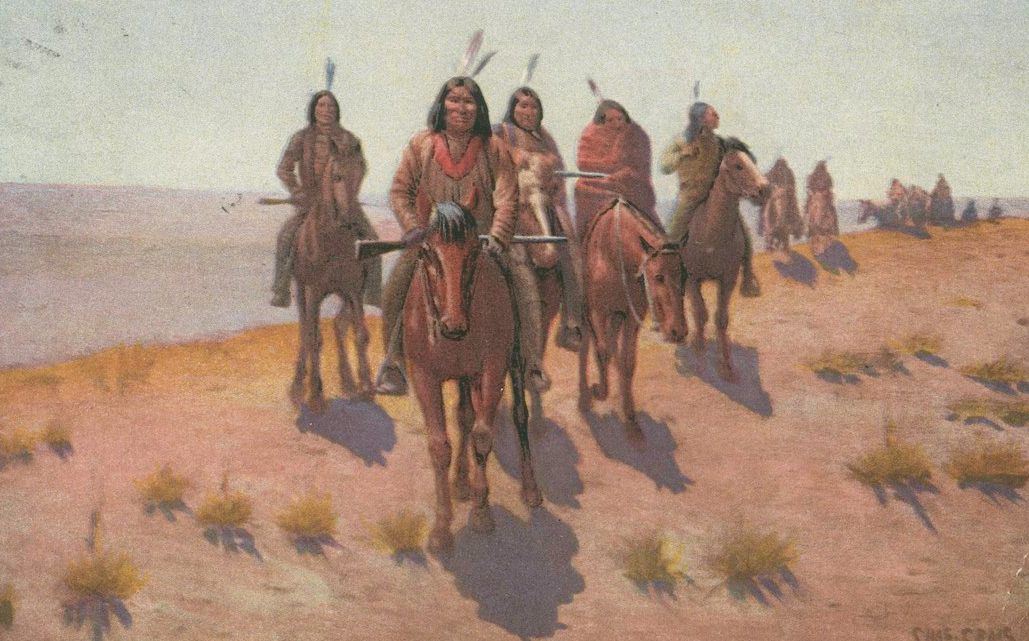 Fred Harvey, Wikimedia Commons
Fred Harvey, Wikimedia Commons
The Apache Wars
The invasion of gold miners on Apache land led to conflict with the United States and the Apache people. A series of armed conflicts were then fought over the next 30+ years that are now known as The Apache Wars.
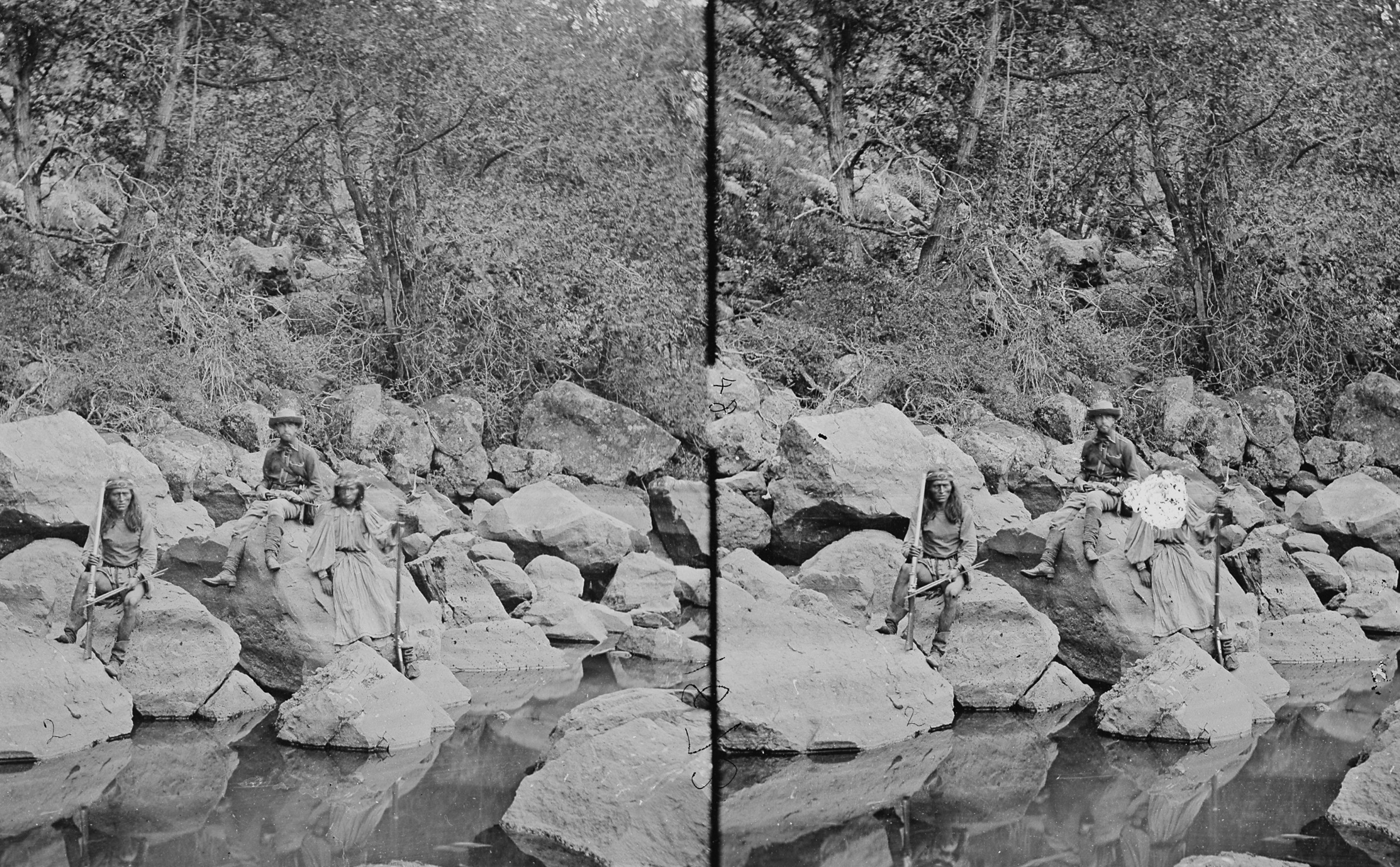 National Archives at College Park, Wikimedia Commons
National Archives at College Park, Wikimedia Commons
The US Reaction
The U.S. Army established forts to fight Apache tribe bands and force Apache to move to designated Indian reservations created by the U.S. in accordance with the Indian Removal Act.
Some reservations were not on the traditional Apache land.
 Library of Congress, Wikimedia Commons
Library of Congress, Wikimedia Commons
Geronimo Campaign: The Last Fight
In 1886, the last large-scale military operation of the Apache wars took place, which involved an army of 5,000 U.S. soldiers sent to subdue no more than 70 Apache warriors who fled one of the reservations and brutally raided parts of Arizona and Sonoroa over the course of a year, killing dozens of people.
Chief Geronimo
Geronimo was an Apache chief who played a back-and-forth game with the U.S. military for years. He had been taken to a reservation and escaped, bringing 700 Apache people with him.
He ended up going back to the reservation a few years later, and then escaping yet again. He and his party were responsible for numerous raids and the loss of many lives.
 Ben Wittick, Wikimedia Commons
Ben Wittick, Wikimedia Commons
Geronimo’s Reputation
Geronimo was demonized by newspapers of the time. He was known as someone not to mess with.
The sheer difference in size of armies shows just how fearsome the Apache were—it took 5,000 men to subdue only 70.
Apache Surrender
Ultimately, the gruesome battle resulted with Geronimo—the Apache chief—and 30 of his followers surrendering to the U.S. military.
Sadly, it was converted Apache Scouts who located Geronimo and persuaded him to surrender.
 Camillus Sidney, Wikimedia Commons
Camillus Sidney, Wikimedia Commons
Continued Warfare
Despite the surrender of Geronimo and his followers in 1886, Apache warriors continued warfare against Americans and Mexicans.
Americans went on search and destroy missions against the Apache, using tactics like solar signaling, wire telegraph, intelligence sharing, and allied Indian Scouts—putting them at a greater advantage than their Indigenous enemy.
 Archivo General de la Nación Argentina, Wikimedia Commons
Archivo General de la Nación Argentina, Wikimedia Commons
The Last Raid
The last Apache raid into the United States occurred as late as 1924 when a war party of Apache, who were later caught and apprehended, stole some horses from Arizonan settlers.
This is considered to be the end of the Apache-American wars—but the Apache-Mexico wars continued for another nine years.
 Rolling Thunder, Wikimedia Commons
Rolling Thunder, Wikimedia Commons
Resistance Groups
Over the next several decades, Apache resistance groups were sighted from 1952 to as recently as 2017—proving that traditional Apache warriors are still out there living among the mountains, fiercely protecting their heritage.
 Henry Farny, Wikimedia Commons
Henry Farny, Wikimedia Commons
Defeat
The Apache were officially considered “defeated” after the Geronimo Campaign.
The band of Apache who were surrendered to the U.S. army were taken reservations, and in the post-war era, Apache children were taken from their families for adoption by white Americans in assimilation programs.
 Choate, J. N, Wikimedia Commons
Choate, J. N, Wikimedia Commons
Apache Today
The majority of modern Apache live either on reservations or in Tribal Jurisdictional Areas, federally recognized areas.
 Grand Canyon National Park, Flickr
Grand Canyon National Park, Flickr
How is their lifestyle today?
Like many other Indigenous groups, the Apache suffer from a marked lack of economic opportunity, their communities plagued by unemployment, poor education, and the problems often associated with endemic poverty, including crime and substance use.
















